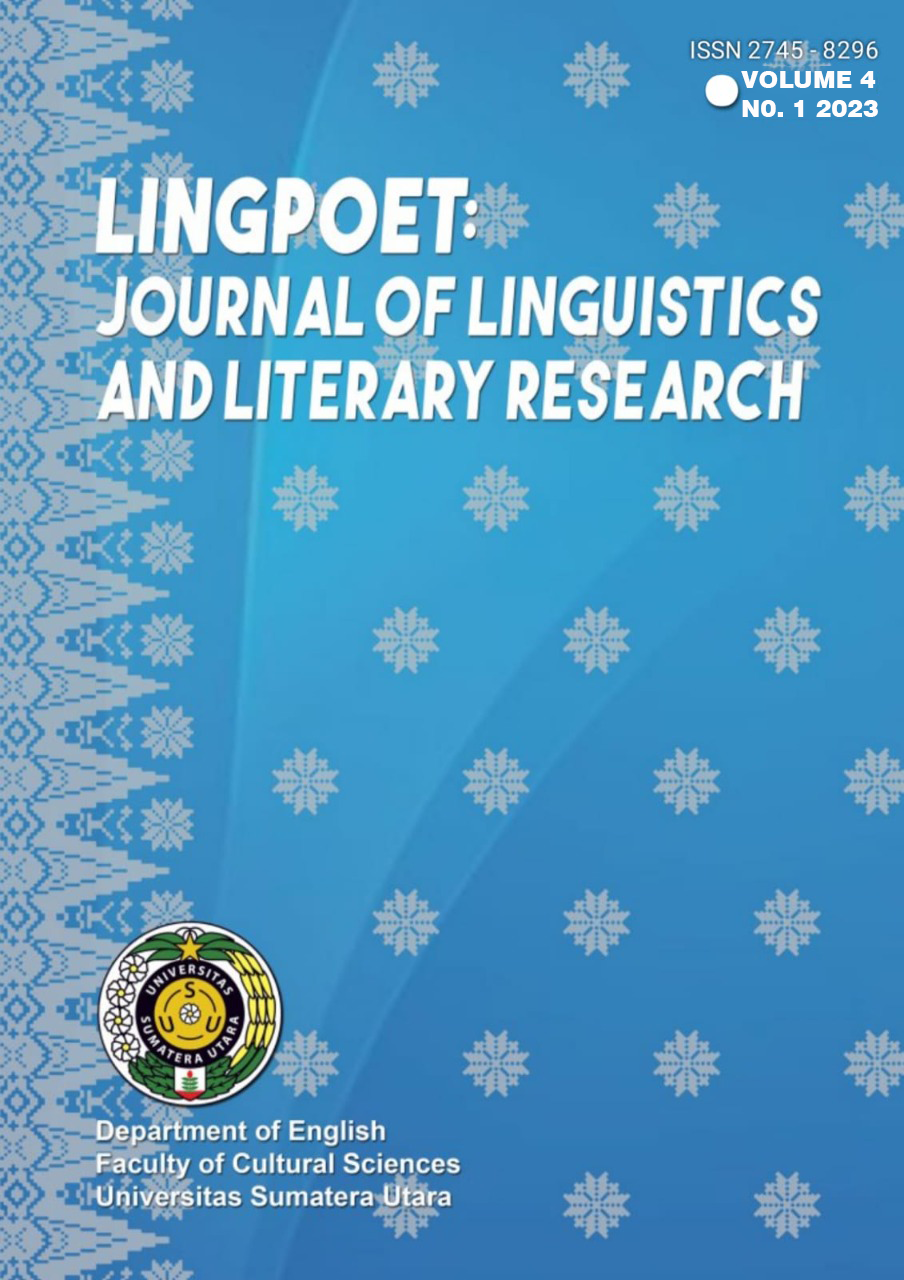Modal Verbs in Spoken and Written Text of BNC Sampler: Corpus-Based Study
Keywords:
Modal Verbs, Corpus, Spoken Text, Written TextAbstract
The purpose of this study is to find out which type of text between written and spoken text that has the highest frequency of modal usage. It analyzes the personal pronouns which be followed by modal verbs. This study employed a corpus linguistic method, relying on quantitative and qualitative techniques. In quantitative design, the researchers examined the frequencies of modal verbs used in spoken and written text. In the qualitative design, the researchers analyzed the functions of modal verbs in representing the expression shown from the text. The data source of this study is a corpus named BNC (British National Corpus) Sampler. The corpus has 184 texts with total amount of word tokens in all corpus texts is about two million. The result show the tendencies of spoken text are mostly to express permission, possibility, and ability. Meanwhile the written text mostly tends to express obligation, and necessity. Also there are similarities and differences between spoken text and written text. The similar finding is the personal pronoun that appears the most and the least are I and she. The different finding is the second most frequent pronoun which appears in spoken text is you, meanwhile in written text is it.
Downloads
References
Crawford, William J. and Eniko Csomay, Doing Corpus Linguistics. New York: Routledge, 2016. [Online] Available: Researchgate.
Eminovic, E, R & Delaludina, S, Corpus- Based Study of Modal Verb in The Spoken and Academic Genres of the Corpus of Contemporary American English. Researchgate, 2019. [Online] Available: Researchgate.
Leech, Geoffrey N, Meaning and the English Verb Third Edition. New York: Routledge, 2004. [Online] Available: Routledge.
Lindquist, Hans, Corpus Linguistics and the Description of English. Edinburgh: Edinburgh University Press Ltd, 2009. [Online] Available: Euppublishing.
Nugraha, D, Double Modal Verbs (Have to) And Verbs in English Modality On Corpus Linguistics in The Context of Industrial Revolution 4.0: Syntactic and Semantic Studies. Malaysian Journal of Social Sciences and Humanities (MJSSH), vol. 4, no. 5, pp. 28-33. 2019.
Oktavianti, I, N, A Corpus-Based Analysis of English Core Modal Verbs and Their Counterparts in Indonesian. International Journal of Scientific & Technology Research, vol. 8, no. 12, pp. 2811-2819. 2019.
Portner, Paul Howard, Modality. United State: Oxford University Press Inc., New York, 2009. [Online] Available: Persiangig.
Samodra, M, C & Barly Bram, Modal Verb “Shall†In Contemporary American English: A Corpus-Based Study. Respectus Philologicus, vol. 41, no. 46, pp. 77-82. 2022.
Stefanowitsch, Anatol, Corpus linguistics: A guide to the methodology. Berlin: Language Science Press, 2020. [Online] Available: Langscipress.
Sujatna, M, L, Eva, T, S, & Kasno, P, Exploring The Use of Modal Auxiliary Verbs in Corpus of Contemporary of American English (COCA). Jurnal Ilmu-Ilmu Sosial Dan Humaniora, vol. 21, no. 2, pp. 166-172. 2019.
Wehmeier, Sally, dkk., In Oxford Advanced Learner’s Dictionary 7th edition. Oxford: Oxford University Press. 2005.
Winiharti, M, The Difference Between Modal Verbs in Deontic and Epistemic Modality. Humaniora, vol. 3, no. 2, pp. 532-539. 2012.
Downloads
Published
How to Cite
Issue
Section
License
Copyright (c) 2023 LingPoet: Journal of Linguistics and Literary Research

This work is licensed under a Creative Commons Attribution-ShareAlike 4.0 International License.













